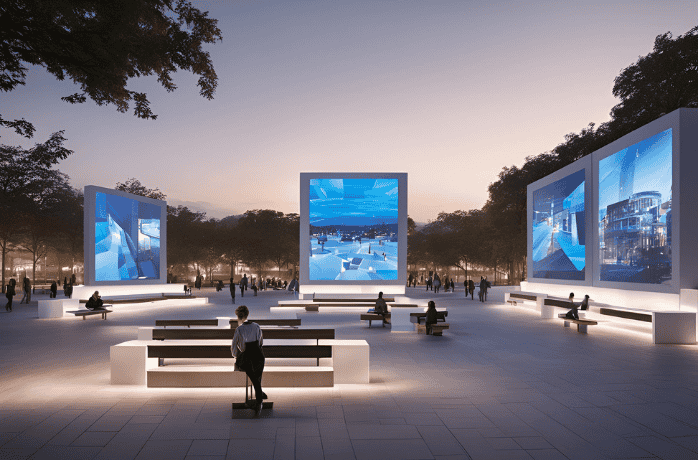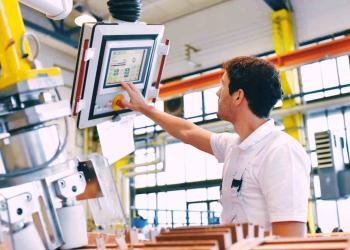
How Smart Cities Revolutionize Urban Life
The urban landscape is undergoing a profound transformation. Cities are no longer static collections of infrastructure but dynamic, interconnected systems powered by the Internet of Things (IoT), cloud computing, and artificial intelligence (AI). This isn’t about incremental upgrades like adding sensors or launching apps—it’s a fundamental redefinition of urban functionality. By leveraging cutting-edge technology, municipalities are creating responsive, efficient, and sustainable environments that prioritize citizens’ needs. The smart city revolution is here, reshaping how we live, work, and thrive in urban spaces.

The Building Blocks of Urban Intelligence
Smart cities utilize advanced technology to integrate various systems and infrastructure components, including transportation, utilities, and public services. Successful innovative city initiatives require a strong technical foundation:
- IoT Infrastructure: A network of connected devices and sensors forms the nervous system of a smart city, collecting vast amounts of data on everything from traffic patterns to air quality.
- Cloud Platforms: These serve as the brain, necessary for processing and storing large data streams generated by IoT devices. They enable real-time analysis and decision-making on a scale previously unimaginable.
- AI and Analytics: Advanced algorithms analyze data, identify trends, predict future trends, and suggest improvements. Raw data is transformed here into actionable intelligence.

Pioneering U.S Cities in Action
Across the United States and beyond, municipalities are deploying cutting-edge technologies to enhance urban living, optimize operational efficiency, and address pressing challenges. By integrating the Internet of Things (IoT), data analytics, and innovative platforms, these cities are setting a global benchmark for what urban environments can achieve.
- In Chicago, the Department of Public Health leverages predictive analytics to revolutionize restaurant inspections. By prioritizing high-risk establishments through data-driven models, the city enhances operational efficiency and strengthens public safety, ensuring compliance with health regulations while optimizing resource allocation.
- San Diego's smart streetlight system exemplifies dual-purpose innovation. These advanced systems slash energy costs while collecting critical data on traffic patterns and ecological conditions. This synergy of economic and environmental benefits showcases how smart city technologies can deliver measurable value across multiple domains.
- Los Angeles is tackling urban congestion with a network of CCTV cameras and road-surface sensors. These tools enable real-time traffic flow updates, reducing bottlenecks and enhancing transportation efficiency. The result is a smoother, more responsive urban mobility ecosystem that benefits millions daily.
- New York City harnesses advanced sensors and data analytics to address complex urban challenges, from transportation to public safety and environmental monitoring. The LinkNYC kiosks, offering free Wi-Fi, device charging, and real-time subway updates, create seamless connectivity and empower communities with accessible, actionable information.

CC License. Work by Jim.henderson
Global Leaders in Smart City Innovation
Beyond the U.S., smart cities worldwide are redefining urban potential through sophisticated technology deployments.
- Since 2012, Barcelona’s smart grid system, powered by the SEIDOR Opentrends Sentilo platform has set a gold standard. This IoT-driven network monitors air quality, tracks energy consumption, manages renewable energy sources, and optimizes electricity distribution, driving sustainability and efficiency at scale.
- In Kobe (Japan), the Sentilo CityOS integrates a vast array of city sensors to collect real-time data on environmental conditions, traffic flow, and public safety. This interconnected system enables precise, informed decision-making, positioning Kobe as a leader in urban intelligence.
- Singapore's holistic approach to smart city development is backed by extensive government support for technology integration across all sectors.
Challenges and Opportunities in Building Smart Cities
While the potential of smart cities is immense, implementation comes with challenges. Many face hurdles such as privacy concerns, surveillance, cybersecurity risks, citizen engagement, and the need for significant upfront investments. Smart City projects succeed when local and regional stakeholders participate in their design and implementation.
The long-term rewards far outweigh the complexities. Smart cities that prioritize data-driven efficiency and citizen-centric innovation deliver measurable gains: cleaner environments, streamlined services, and vibrant, equitable communities. As urban leaders confront these challenges head-on, they lay the groundwork for a future where cities are smarter, fundamentally more livable, and sustainable.

The Future of Smart Cities and the Role of Emerging Technologies
Smart cities are developing rapidly and this growth will accelerate in the years ahead. The capabilities of 5G networks will allow for more sophisticated IoT applications, while machine learning (ML) algorithms will become increasingly adept at predicting and preventing urban issues before they arise. As cities become more interconnected, we may even witness the emergence of "smart regions" that optimize resource allocation and service delivery across substantially larger geographical areas.
Innovative Smart City Tech Predictions
The future of smart cities extends beyond enhanced connectivity and predictive analytics. Imagine urban landscapes coordinating multiple fleets of autonomous delivery drones, or rapidly deploying 3D printed infrastructure and transforming iconic landmarks into sentient hubs that cater to our every need. What if blockchain technology empowered citizens to influence urban planning while neurotechnology allowed cities to optimize public spaces for mental wellness? Although they may sound like futuristic fantasies, these meaningful improvements offer a glimpse of the significant improvements coming to smart city technology within the next decade.

Image: Mental wellness public space concept
Smart city development presents an important opportunity for public and private sector decision-makers. We can create smarter urban landscapes by investing in this cutting-edge smart infrastructure and fostering partnerships between government, technology providers, and citizens. This will set the stage for more sustainable urban living, aligning with global efforts to combat climate change. The city of the future is no longer a distant dream –the key question is not if but how rapidly it will emerge.
Is your municipality next?
Sources:
https://statescoop.com/chicago-emerging-tech-task-force/
https://www.chicago.gov/city/en/depts/mayor/press_room/press_releases/2023/october/ctit-plan-city-transformation.html
https://www.nbcsandiego.com/news/local/memo-reveals-huge-cost-overruns-for-san-diegos-smart-streetlights/2264320/
https://www.sandiegocounty.gov/content/dam/sdc/grandjury/reports/2021-2022/SmartStreetlightsReport.pdf




